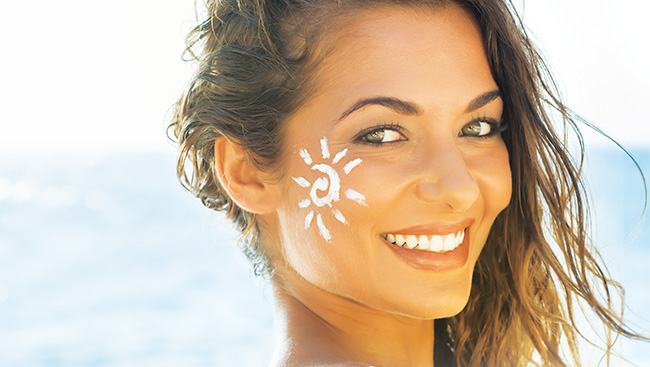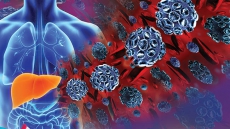Make 2017 the year you optimize your vitamin D levels through effective sun exposure
The daylight hours are getting longer and the sun is getting stronger. Make 2017 the year you optimize your vitamin D levels through effective sun exposure. Enjoy health benefits and disease prevention from optimal vitamin D levels and learn to control your risks from the sun.
Vitamin D is made naturally in your body when UVB rays from the sun convert cholesterol in your skin to pre-vitamin D3. We make about 90 per cent of our vitamin D from UVB sun exposure. UVB rays are short and only reach the earth when the sun is directly above us. We can’t make vitamin D in the winter in Canada because the sun is at too low of an angle and the UVB rays are absorbed in the atmosphere.
You make vitamin D in Canada between the months of May and October. The best time for exposure is around midday, between 10 am and 2 pm, when the UV index is above 3 and your shadow is shorter than your height. The further you get from noon, the lower the amount of vitamin D you’ll make. The sun’s visible light may penetrate through glass, but UVB light will not therefore you will not make vitamin D.
Full body sun exposure at non-burning levels can create between 10,000-25,000 IU of vitamin D in your skin. You can never get too much vitamin D from the sun as your skin self regulates itself, whereas ingesting vitamin D does not have the same control. In addition, vitamin D that you make from the sun lasts twice as long in your body as vitamin D taken through supplements or food.
Statistics Canada reports that Canadian vitamin D levels have dropped by 10 per cent over the past six years. The root cause of this decrease is lower sunshine exposure. People are just not getting outside around midday in the summer and making vitamin D, and when they are outside they are using sunscreen which if applied correctly prevents 95%+ of vitamin D production.
In Canada, 12 million Canadians (35 per cent) have vitamin D blood levels below the recommendations from Health Canada. This puts these people at a higher risk for several diseases, including cardiovascular disease, cancer, osteoporosis, diabetes, multiple sclerosis, Alzheimer’s disease, and many more. In fact, a study completed in 2016 reported that if Canadians increased their vitamin D levels to the recommended level of
100 nmol/L, we would save $12.5B in healthcare costs and 23,000 premature deaths annually.
Skin cancer is a concern and risk of sun exposure must be managed and balanced with the benefits from vitamin D and other photoproducts. Research has shown that people with higher sun exposure such as outdoor workers, who have 3-10 times the sun exposure as indoor workers, have a lower incidence of melanoma. National Cancer Institute reports that melanoma risk is increased as a result of intermittent acute sun exposure leading to sunburn. People who are a skin Type 1, with white or very pale skin colour, red or blonde hair colour and who always burn and never tan, should severely limit their sun exposure.

The Vitamin D Society offers the following tips:
Know your own skin and skin type
You know best the condition of your skin (tanned or not) and how your skin reacts to sun exposure. What colour is your skin? Pale white, white, light brown, brown or dark brown/black? Do you burn easily when in the sun, all the time or maybe just in early spring when your skin is pale from lack of sun exposure in the winter? Does your skin tan at all? As your skin acclimatizes to sunshine throughout the summer and builds a tan (skin Type II – VI), it is able to receive more sunshine without overexposure or burning. Keep this in mind when you go out in the sun especially early in the spring when your skin is not conditioned to the sun to ensure you do not expose yourself to more sun than your skin can handle.
Condition your skin for sun exposure by gradually building or lengthening exposure times
After winter don’t head off to the beach on the first warm, sunny day with your pale white skin and lay out all day. It is important that you gradually build up your skins tolerance for sun exposure. Start off slowly and cautiously increase the time spent out in the sun. Space out your sun sessions and give your skin a chance to adapt and recover. For people who can develop a tan (skin Type II to VI), your skin will begin to darken and the thickness of the skin will also increase. This is called photoprotection or a base tan. Studies have found that a base tan reduces the sensitivity for burning by 75 per cent. Evidence also shows that a tan provides sun protection equivalent to an SPF of 4.
Prevent burning and overexposure through the use of hats, clothing, shade and sunscreens
Sometimes you are going to be out in the sun for longer than your skin can handle without burning. You will need to use some type of sun protection, seek shade or move inside. Do not burn! Hats and clothing which cover your skin are an excellent option to help prevent overexposure. Sunscreens when used as recommended do prevent 95%+ of vitamin D production. However, sunscreens should always be used to prevent burning exposure if no other options are available.

For vitamin D, get sun exposure at midday, between 10 am and 2 pm
The colour of your skin will play a key role in how much time is needed outside in sunlight at midday to make your vitamin D. People with darker skin tones will need up to 10 times as much time in the sun as people with light skin to make the same amount of vitamin D. This is why Canadians with darker skin are at a greater risk of being vitamin D deficient and may need vitamin D supplementation.
Expose more skin for a shorter period of time to generate more vitamin
Think of your skin as a big solar receptor. The more skin that is exposed to the sun, the quicker your tank will be fully charged with vitamin D!
It’s important to manage the risk and enjoy the rewards of moderate sun exposure for good health. Cancer Research UK, through the Consensus Vitamin D Position Statement, offers the following recommendation: “Enjoying the sun safely while taking care not to burn, can help provide the benefits of vitamin D without unduly raising the risk of skin cancer.”

The Fitzpatrick scale
Skin type is based on something called the Fitzpatrick scale. It is a numeral classification system based on how your skin responds to sunlight. Skin Type I people should carefully limit their time in the sun and use sun protection. Skin Type V and VI have dark skin that tolerates sun exposure well.
Type I – always burns, never tans (pale white; blond or red hair; blue, gray eyes)
Type II – usually burns, tans minimally (white; fair; blond, brown or red hair; blue, green or hazel eyes)
Type III – sometimes mild burn, tans uniformly (cream white; fair
with any hair colour or brown eyes)
Type IV – burns minimally, always tans (light brown; olive; dark brown to black hair)
Type V – very rarely burns, tans very easily (brown)
Type VI – never burns, always tans (deeply pigmented dark brown to darkest brown, black in complexion)

About the Author
Perry Holman is the Executive Director of The Vitamin D Society (VDS), a small non-profit organization based in Canada. The VDS is dedicated to reducing vitamin D deficiency and raising the public’s awareness of the optimal vitamin D blood levels of between 100-150 nmol/L. To learn more about vitamin D, visit www.vitamindsociety.org




